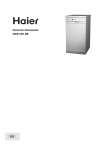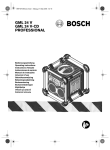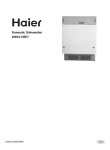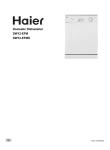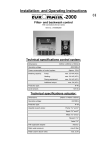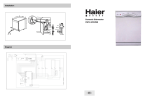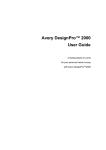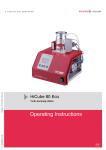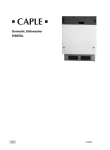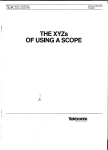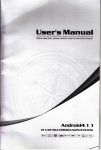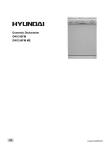Download Haier DW9-LBE User's Manual
Transcript
0120503979 Dishwasher DW9-LBE Instructions for Use en Safety Is a Good Habit to Develop NOTICE Carefully read the instructions contained in this manual, as they provide important information which is essential to safe and proper installation, use and maintenance of the appliance. This appliance complies with the following EEC directives: -73/23/EEC of 19 February 1973 (Low Voltage) and subsequent modifications; - 89/336/EEC of 3 May 1989 (Electromagnetic Compatibility) and subsequent modifications. - Carefully dispose of the packing material. - After removing the packing, check to make sure that the appliance is not damaged. If in doubt, contact a qualified professional. - The dishwasher must only be used by adults for the washing of household dishes and cooking utensils. - The appliance is not intended for use by young children or inform persons without supervision. - Young children should be supervised to ensure that they do not play with the appliance. - Keep detergents out of the reach of children, who must also be kept away from the dishwasher when it is open. - This appliance cannot be installed outdoors, not even if the - Do not touch the heating element during or after a wash cycle. - Do not lean or sit on the door when it is open as this could over turn the dishwasher. - If the appliance malfunctions, turn off water supply to the appliance and disconnect the plug from the wall socket. Then, consult the section entitled, "Troubleshooting." If you cannot solve the problem, contact a service centre. - Only specialised personnel are authorised to make repairs. - Appliances which are no longer being used must be made inoperable by cutting the power supply cord and removing the door lock. - If the supply cord is damaged, it must be replaced by a special cord or assembly available from the manufacturer or its service agent. - After installation, the power plug must be accessible. - Fundamental rules to follow when using the appliance: * Never touch the dishwasher when barefoot or with wet hands or feet; * We discourage the use of extension cords and multiple sockets; * During installation, the power supply cord must not be excessively or dangerously bent or flattened; * If the appliance is not operating properly or maintenance must be performed, disconnect the appliance from the power supply. To maintain the EFFICIENCY and SAFETY of this appliance,we recommend: - call only the Service Centers authorized by the manufacturer. - always use original Spare Parts area in which it is installed is covered by a roof; it is also very dangerous to leave it exposed to the rain and elements. Close-up View (Control Panel) H A D A B C D E F G B Q P I F L C G E H I L M N O P Q ON-OFF Button LCD Display Delayed Stand Setting Button Button For "Entra Drying" or "Half Load" or "Delay" Start/Pause Button Program Selection Button Progrem indicator light M N O Extra drying indicator light Half load indicator light Delayed start indicator light Remaining time and delayed start time indicator Low rinse aid indicator light Low salt indieator light Cycle phase indicator Selection cursor .1. GB Close-up View (Interior) A B C D E Upper Rack Rack Height Adjustor Top Spray Arm Lower Rack F G H I Washing Filter Detergent and Rinse Aid Dispenser Salt Container Cap Third Sprayer Bottom Spray Arm Specifications Width 45cm Depth 58cm Height 82cm Capacity 9 standard place settings Mains Water Pressure 0.03-0.6MPa Power Voltage 220-240V~ 50Hz Total Absorber Power GB 2150W .2. S a l t Salt Adjusting Salt Consumption The hardness of the water varies from place to place. If hard water is used in the dishwasher, deposits will form on the dishes The dishwasher is designed to allow for adjusting the amount of salt consumed based on the hardness of the water used. This is and utensils. The appliance is equipped with a special softener that uses a salt intended to optimise and customise the level of salt consumption so that it remains at a minimum. Your local Water Board can specifically designed to eliminate lime and minerals from the water. supply the degree of hardness of the water in your area. To adjust salt consumption, proceed as follows: Loading the Salt into the Softener Always use salt intended for use with dishwashers. The salt container is located beneath the lower rack and should be filled as follows: - When the "low salt indicator light" (O) blinks,you must fill the salt. - Remove the lower rack and then unscrew and remove the cap from the salt container; - If you are filling the container for the first time, fill it with water; - Place the end of the funnel (supplied) into the hole and introduce about 2 kg of salt. It is normal for a small amount of water to come out of the salt container. - Carefully screw the cap back on. - Unscrew the cap from the salt container; - There is a ring on the container with an arrow on it (see figure), If necessary, rotate the ring in an anticlockwise direction from the "-" setting towards the "+" sign, based on the hardness of the water being used. It is recommended that adjustments be made in accordance with the following scheme: Water Hardness The salt container must be filled when the "low salt" indicator light (located on the control panel) comes on. To prevent the formation of rust, load the salt just before beginning a wash cycle. Clarke degrees dH 014 MNT NQPS NUQQ PSTN [TN mmol/l MNIT Selector position Salt Autonomy c o n s u m p t i o n (cycles/2kg) (Grams/cycle) L M L NIUQIQ =?J? OM SM QRUV QIRUIV jba QM [UV [UIV ?H? SM QM OR .3. GB Detergent and Rinse Aid Detergent Rinse Aid Detergent specifically intended for use with dishwashers must This product makes dishes sparkle and helps them to dry with- be used. The dispenser must be refilled before the start of each wash cycle following the instructions provided in the "Wash Cycle out spotting. The dispenser is located on the inside panel of the door and should be filled after "low rinse aid indicator light" (M) Table." The detergent dispenser is located on the inside panel of the door. blinks. Loading the Rinse Aid Loading the detergent To open the "A" cover on the dispenser, press the "B" button. To open the dispenser, turn the "C" cap in an anti-clockwise direction and then pour in the rinse aid, making sure not to overfill. The detergent for the wash cycle should be poured into the "C" compartment. The amount of rinse aid used for each cycle can be regulated by turning the "F" dose adjustor, located beneath the "C" cap, with After the detergent has been placed in the dispenser, close the cover and press down until it clicks in place. a screwdriver. There are 6 different settings; the normal dosage setting is 3. Important Proper dosage of the rinse aid improves drying. If drops of water remain on the dishes or spotting occurs, the C dosage adjustor should be turned to a higher setting. If the dishes have white streaks, turn the dosage adjustor to a lower setting. A B C F C Note: To facilitate closing the cover, remove any excess detergent on the edges of the dispenser. GB .4. Loading the Dishwasher Lower Rack Before placing the dishes in the dishwasher, remove larger food Upper Rack particles to prevent the filter from becoming clogged, which results in reduced performance. If the pots and pans have baked-on food that is extremely hard to remove, we recommend that they are soaked before washed. This will eliminate the need for extra wash cycles. Pull out the rack to load the dishwasher. How to use the lower rack We recommend that you place the most difficult to clean items on the bottom rack: pots, pans, lids, serving dishes and bowls, as shown in the figure to the right. Load for 9 Standard Settings It is preferable to place serving dishes and lids on the sides of the racks in order to avoid blocking the rotation of the top spray arm. - Pots, serving bowls, etc. must always be placed face down. - Deep pots should be slanted to allow the water to flow out. - The lower rack features fold down tine rows (see fig.A) so that larger or more pots and pans can be loaded. - The silverware basket can be doubled (see fig.B) so that only one section may be used when the silverware load is light. This also makes space for additional pots and pans and it can also be placed in the upper rack. Load for 9 Standard Settings (for IEC-EN 50242 tests) - Silverware should be placed in the silverware basket with the handles at the bottom; if the rack has side baskets, the spoons should be located individually into the appropriate slots. Especially long utensils should be placed in the horizontal position at the front of the upper rack. How to use the upper rack The upper rack is designed to hold more delicate and lighter dishware, such as glasses, cups and saucers, plates, small bowls and shallow pans (as long as they are not too dirty). - Position the dishes and cookware so that they do not get moved fig.A fig.B by the spray of water. The upper rack can be adjusted for height by using the knobs located on both sides of the rack itself (see fig.C). Adjust the upper basket to the higher level and you have more space to accommodate those taller pans and trays in the bottom basket. Shelf Lean tall glasses and those with long stems against the shelfnot against other items to be washed. fig.C fig.D Place glasses, cups and small bowls on the additional cup rack. The additional cup rack can be swivelled in or out as required (see fig.D). Knife rack The knife rack clips onto the side of the top basket, giving you the freedom to wash your large sharp knives separately and out of harm’s way (see fig.E). fig.E .5. GB Starting the Appliance Starting a wash cycle Setting the Wash Cycle with a Delayed Start Time After having completed all of the installation steps in the preceding paragraphs, turn on the water all the way and press the ONOFF button (A) located on the control pannel. The appliance is on (see fig.1). By pressing the "D" button (see close-up view-'Control panel"), select ,and the selection cursor turns on,then pressing the "C" button ,the start of wash can be delayed for between 1 to 12 hours. Each time the "L" button is pressed, the display (M) will show the number of hours for the delay period. Choose the amount of time desired. After selecting the wash cycle, pressing the start-pause button(E), the delay time on the display will blink.This indicates that the countdown has begun. After the time has alapsed, the cycle will start. Setting and Starting a wash Cycle NOTE: During the delay period, it is preferable not to change any of the settings, If this is necessary, all of the settings must be cancelled by pressing the ON/OFF button (A). At this point, all of the steps for "setting the wash cycle with a Delayed Start Time" and "Setting and Starting a wash cycle" must be repeated, following the instructions contained in the corresponding sections. If the door is opened to the unit during the delay period, the countdown will stop. It wil begin again when the door is closed. Select the desired cycle by pressing programme selection button (F). Each time the button is pressed, the seletion cursor"Q"will come on in succession. Choose the wash cycle you feel is most appropriate for the type of dishes that need washing (consult the wash cycle table contained in this manual. After press the startpause button(E), the wash cycle has begun and can no longer be changed. If necessary, read the paragraph entitled "Cancelling or modifying a cycle" Cancelling or modifying a cycle All of the wash cycle set to reverse time function, we may in focus start circulate time. A cycle that is underway can only be modified if it has only been running for a short time. Otherwise, the detergent may have already been used, and the appliance may have already drained the wash water. If this is the case, the detergent dispenser must be refilled (see the paragraph entitled, "Loading the Detergent"). To modify a cycle that is already underway, press the start- pause button (E) for 5 second, all of the settings will be cancelled. To set a new cycle, follow the instructions contained in the paragraph entitled "Setting and starting a wash cycle". Wash Cycle adjustment Buttons Button for "extre drying" or "half load" or "delay" By pressing the "D" button in sequence ,the selection cursor (Q) will come on in turn : Extre drying -- Half load --Delay -- Extre drying+Half load --Extre drying+Delay --Half load +Delay -- Extre drying+Half load + Delay Extre drying By pressing the "D" button,the drying time of extre drying will be longer ,and the drying relating is better. Half load By pressing the "D" button,this button (see "close-up View - Control Panel", letter "D") makes it possible to wash dishes using only the upper rack if there are not enough dishes for a full load. This will allow you to save on water and power. It can be used before setting any of the wash cycle, except for the intensive cycle ( if included in the wash cycle table). Please keep in mind that the amount of detergent should also be cut in half. Wash Cycle Program Light The dishwasher is equipped with a LCD indicator light (G) that turns on when the appliance is running the wash cycle. At the end of the wash cycle Six beeps will indicate that the wash cycle has finished and the LCD display (B) will come on (see fig.1). Turn off the appliance using the ON-OFF button. Turn off the water supply to the appliance and open the door. Wait a few minutes before unloading the dishwasher to avoid handling the dishes and utensils while they are still hot and more susceptible to breakage. They will also dry better. `óÅäÉ=éÜ~ëÉ=ìåÇÉêï~ó=áåÇáÅ~íçå The dishwasher is equipped an indecation "P" comprissing 4 symbels which represerd the diferent phases of a wash cycle. When the wash cycle has started,the displace will indicate ,the phase under way in sequence.There place are pre-wash,wash, rinse,drying. pre-wash .6. GB wash rinse drying Energy Saving Tips - It is important to try and run the dishwasher when it is fully - Use the right amount of detergent: if you use too much detergent, loaded in order to save on energy. To prevent odours from form- the result will not be cleaner dishes, but, rather, a greater negative impact on the enviroment. ing and food from caking onto the dishes, you can run the hold cycle. - There is no utility in rinsing dishes, cookware and utensils before placing them in the dishwasher. - Choose the right wash cycle: the choice of cycle depends on the type of dishware, cookware and utensils being washed and how dirty they are. How to Keep Your Dishwasher in Shape After Every Wash Moving the Appliance After every wash, turn off the water supply to the appliance and If the appliance must be moved, try to keep it in the vertical leave the door slightly ajar so that moisture and odours are not trapped inside. position.If absolutely necessary, it can be positioned on its back. Seals Remove the Plug One of the factors that cause odours to form in the dishwasher Before cleaning or performing maintenance, always remove the plug from the socket. is food that remains trapped in the seals. Periodic cleaning with a sponge will prevent this from occuring. No Solvents or Abrasive Cleaning Products When You Go on Holiday To clean the exterior and rubber parts of the dishwasher, do not When you go on holiday, it is recommended that you run a wash use solvents or abrasive cleaning products. Use only a cloth and warm soapy water. cycle with the dishwasher empty and then remove the plug from the socket. Turn off the water supply and leave the door of the To remove spots or stains from the surface of the interior, use a cloth damp and a little white vinegar, or a cleaning product made appliance slightly ajar. This will help the seals last longer and prevent odours from forming within the appliance. specifically for dishwashers. .7. GB Wash Cycle Table Cycle Selection Information Cycle Description of Cycle Detergent Rinse Aid Extra drying Pre-wash with hot water. Very dirty dishes, pots and Heavy Duty pans. (not to be used with delicate items) Extended wash at 70 °C. Rinse with cold water. 30g 30g Rinse with hot water . Drying. Pre-wash with cold water. Normal dirty dishes, pots and pans. Standard daily cycle. Rinse with hot water . Drying. Normal Wash Light Wash Normal dirty dishes, pots and pans without dried on residue. Glass ware Economic, fast cycle to be used for items which are sensitive to higher. Run immediately after dishes are used. Economic, fast cycle to be used to on not very dirty dishes right after they are used. No drying cycle. Rapid Wash Soak Rinse with cold water. Rinse with hot water . Wash at 60 °C. Rinse with warm water. Hot rinse . Drying. Short wash at 40 °C Cold rinse . . Hot rinse at 65 Drying. For dishes that need to be rinsed and dried only Pre-wash of dishes, pots and Short cold wash to prevent pans while waiting for the load to be completed after the subse- food residue from drying on the dishes . quent meal. .8. GB Pre-wash with cold water. Extended wash at 50 °C. 25+5g E R F Drying. (IEC-EN50242) Rinse Extended wash at 55 °C. Rinse with cold water. 15g 15g Cleaning and Special Maintenance Filter Assembly Cleaning the Spray Arms For best performance and results, the filter assembly must be cleaned. It may happen that food particles become encrusted on the sprayer arms and block the holes (see "Close up view interior", The filter efficiently removes food particles from the wash water, allowing it to be recirculated during the cycle. For this reason, it letters C-E ). Check the sprayer arms periodically and clean them when needed. is advisable to remove the larger food particles trapped in the filter after each wash cycle by rinsing the semi-circular filter and Cleaning the Water Inlet Filter Periodically clean the water inlet filter located on the outlet of the water supply tap. cup (A) under running water. To remove the filter assembly, pull on the cup handle in the upward direction. The entire filter assembly (made up of the semicircular filter (A) and fine filter (B)) should be cleaned at least once a month. To clean the filter and fine filter, use a cleaning brush. Then, reassemble the filter parts as shown in the figures below and refit the entire assembly in the dishwasher, positioning it in its seat and pressing downward. The dishwasher must never be used without the filters. Improper replacement of the filters may reduce the performance of the appliance and damage dishes and utensils. After turning off the water tap, unscrew the end of the water supply hose, remove the filter and clean it carefully under run- A ning water. Then, return the filter to its place and tighten the water supply hose back into position. B Troubleshooting The dishwasher does not drain have you checked whether: - the drain hose is crimped or bend. It may occur that the dishwasher does not function or does not function properly. Before calling for assistance, See what can be done first: have you forgotten to press one of the buttons or Lime Deposits or a White Film Form on the Dishes to perform an essential operation? Have you checked whether: - the lid to the salt container is closed properly; - the rinse aid dosage is correct. The Dishwasher Does Not Start Have you checked whether: If, despite all these checks, the dishwasher still does not function and/or the problem persists, contact the nearest authorised - the plug is pushed into the socket correctly; - the power is on in the house; service centre and provide them with the following information: - the nature of the problem; - the door is closed properly; - the model type number (Mod...) and the serial number (S/N...), which are indicated on the plate located on the side of the inner part of the door. The Dishwasher Does Not Load Water Never call on unauthorised technicians and refuse to allow parts to be installed that are not original spare parts. Have you checked whether: - the water is turned on and the hose is connected properly; - the water supply to the house is on and has sufficient pressure; - the water supply hose is crimped or bend; - the filter for the water supply hose is clogged. .9. GB Installation Positioning the Appliance The connection must be made to the hot water line following the same procedures as those for the connection to the cold water Position the appliance in the desired location. The back should rest against the wall, and the sides along the adjacent cabinets line. or wall. The dishwasher is equipped with water supply and drain hoses that can be positioned to the right or the left to facilitate Anti-Flooding Protection The dishwasher is equipped with a system that stops the supply proper installation. of water in the event of a problem with the water supply hose, or leaks within the unit, in order to prevent damage to your home. Levelling the Appliance Once the appliance is positioned, adjust the feet (screwing them If for any reason the box containing the electrical components happens to get damaged, remove the plug of the appliance from in or out) of the dishwasher until it is level. In any case, the appliance should not be inclined more than 2°. If the appliance is level, it will help ensure proper performance. the socket immediately. In order to guarantee that the anti-flooding feature operates properly, the box "A" with the water supply Cold Water Connection Connect the cold water supply hose to a threaded 3/4 (gas) con- hose must be attached to the water supply tap as shown in Fig. 1. No other type of connection is acceptable. The water supply nector and makeing sure that it is fastened tightly in place (see Fig.1). hose must not, under any circumstances, be cut, as it contains electrical parts which are live. If the length of the hose is not If the water pipes are new or have not been used for an extended period of time, let the water run to make sure that the adequate to make a proper connection, the hose must be replaced with one which is long enough. This hose is available water is clear and free of impurities. If this precaution is not taken, there is a risk that the water inlet can get blocked and damage upon request from specialised retailers and service centres. the appliance. Hot Water Connection The water supply to the appliance can also be connected to the house's hot water line (centralised system, heating system), as long as it does not exceed a temperature of 60. In this case, the wash efficiency slightly reduced. Fig.1 Installation Drain Hose Connection Attention: Insert the drain hose into a drain pipe with a minimum diameter of 4cm, or let it run into the sink, making sure to avoid bending The special plastic hose support must be solidly fastened to the wall to prevent the drain hose from moving and allowing water or crimping it. Use the special plastic support that comes with the appliance (see Fig.2). The free end of the hose must be at to spill outside the drain. a height between 40 and 100 cm and must not be immersed in water. After making sure that the voltage and frequency values for the current in the home correspond to those on the rating plate Electrical Connection (located on the stainless steel inner door of the appliance) and that the electrical system is sized for the maximum voltage on the rating plate, insert the plug into an electrical socket which is earthed properly (the earthing of the appliance is a safety requirement mandated by law). If the electrical socket to which the appliance must be connected is not appropriate for the plug, replace the plug rather than using adapters or the like as they could cause overheating and burns. Fig.2 GB .10. Installation Diagram A N C IS 1 B L 1 2 220-240V ~ 3 CnL1 1 2 3 4 5 6 7 8 D J H D-ED F G 1/2 E 1 M IAQS 2 3 1 2 4 ML 2 C S CnP3 1 1 2 3 4 5 6 7 8 P CnP1 O ISS N CnP2 12 11 10 9 8 7 6 5 4 3 2 1 SCHEDA DI POTENZA e CONTROLLO AQS I 1 6 5 4 3 2 1 K L M RELE' A.Wiring box B.Door switch C.Water level switch D.Drain motor E.Overflow switch F.Half wash switch G.Softer valve H.Dispenser valve I.Aquastop inlet valve J.Washing motor K.Temperature limiter L.Heater M.Relay N.Sensor temperature O.Salt missing switch P.Rinseing aid missing switch












